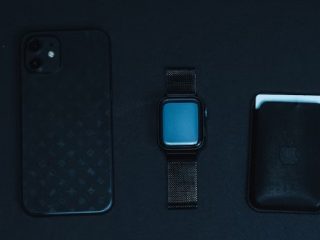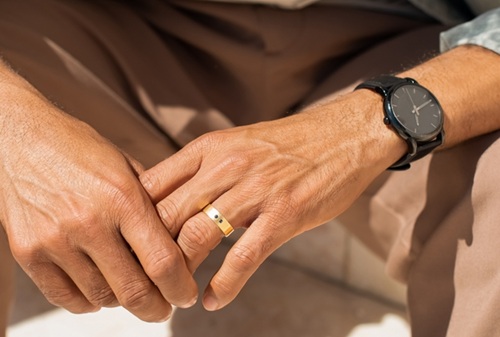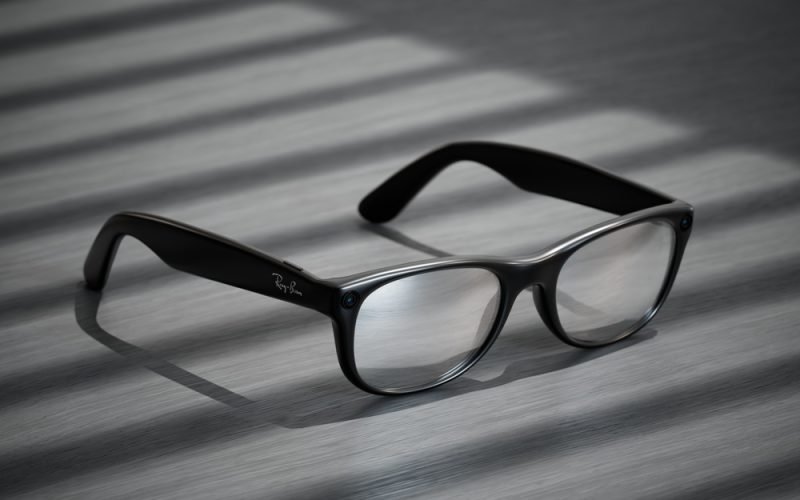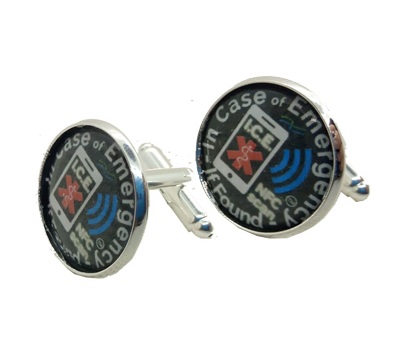 In 2025, men’s fashion is undergoing a seismic shift, driven not by fabrics or cuts alone but by integrating cutting-edge technology into everyday accessories. From smartwatches that double as personal assistants to tech-infused rings that monitor health, the rise of smart accessories redefines stylishness. No longer just a matter of aesthetics, style in 2025 is about functionality, innovation, and a seamless blend of form and utility. This article dives deep into the evolution of this trend, the standout accessories leading the charge, their impact on men’s fashion, and what the future holds for this tech-driven revolution.
In 2025, men’s fashion is undergoing a seismic shift, driven not by fabrics or cuts alone but by integrating cutting-edge technology into everyday accessories. From smartwatches that double as personal assistants to tech-infused rings that monitor health, the rise of smart accessories redefines stylishness. No longer just a matter of aesthetics, style in 2025 is about functionality, innovation, and a seamless blend of form and utility. This article dives deep into the evolution of this trend, the standout accessories leading the charge, their impact on men’s fashion, and what the future holds for this tech-driven revolution.
The Evolution of Accessories
Accessories have long been a cornerstone of men’s fashion, representing status, personality, and taste. In centuries past, a pocket watch or a pair of cufflinks could signify wealth and refinement. By the late 20th century, accessories like leather belts and sunglasses became symbols of coolness and individuality. Entering the 21st century, the digital age reshaped traditional items, enhancing them with capabilities far beyond their original purpose. The first wave of smart accessories arrived with the advent of fitness trackers and smartwatches in the early 2010s.
Devices like the Fitbit and Apple Watch introduced men to the idea that a wrist accessory could do more than tell time—it could track steps, monitor heart rates, and even send notifications. By 2020, these devices had become mainstream but were often clunky, utilitarian, and lacked the polish of traditional fashion pieces. Designers and tech companies alike recognized the opportunity to bridge this gap. By 2025, the result is a new breed of smart accessories that marry high-tech functionality with sleek, sophisticated design.
This evolution reflects broader societal shifts. In 2025, men are increasingly tech-savvy, health-conscious, and environmentally aware, expecting their accessories to reflect these values. The modern gentleman doesn’t just want to look good—he wants his style to work for him, enhancing his life in tangible ways. Smart accessories are the answer, transforming once-static items into dynamic tools that elevate both appearance and lifestyle.
Key Smart Accessories Leading the Trend in 2025
The rise of smart accessories in 2025 is defined by a handful of standout innovations that have captured the imagination of style-conscious men. Let’s explore the most prominent examples and how they reshape the accessory landscape.
1. The Next-Generation Smartwatch
The smartwatch remains the king of tech-infused accessories, but in 2025, it’s undergone a dramatic transformation. Brands like Apple and Samsung, and luxury watchmakers such as Tag Heuer, have pushed the boundaries of design and functionality. Today’s smartwatches are slimmer, with bezel-less displays and customizable faces that mimic the elegance of analog timepieces. Materials like titanium and lab-grown leather add a premium feel. At the same time, features like real-time blood oxygen monitoring, AI-driven fitness coaching, and seamless integration with augmented reality (AR) glasses make them indispensable.

For instance, the 2025 Tag Heuer Connected Calibre X boasts a modular design, allowing users to swap out straps and bezels to match any outfit, from a business suit to gym gear. Meanwhile, its embedded AI can analyze sleep patterns and suggest optimal wake-up times, syncing with smart home devices to adjust lighting and temperature. This fusion of luxury and utility has made the smartwatch a must-have for the modern man, proving that practicality need not compromise style.
2. Smart Rings
While smartwatches dominate the wrist, smart rings have emerged as a subtler, equally powerful alternative. In 2025, companies like Oura and Circular have refined this category, offering rings that look like traditional jewelry but pack a punch in terms of tech. The Oura Ring 4, for example, is a sleek band of matte black titanium that tracks heart rate variability, body temperature, and even stress levels, all while blending seamlessly with a tailored suit or casual attire.

What sets smart rings apart is their discretion. Unlike a watch, which demands attention, a ring operates quietly, syncing data to a smartphone app without fanfare. In 2025, this understated elegance appeals to men who value minimalism but still want the benefits of wearable tech. Some models double as payment devices or keyless entry tools, making a simple band a gateway to a connected life.
3. Tech-infused wallets and Cardholders
The humble wallet has also joined the smart revolution. In 2025, brands like Ekster and Volterman will produce wallets with built-in GPS trackers, RFID-blocking technology, and solar-powered charging capabilities. The Ekster Parliament 3.0, for instance, features a slim design that holds cards and cash. Pressing a button ejects cards for easy access, while an integrated tracker ensures you never lose it. Pair it with a smartphone app to locate your wallet anywhere.

These wallets cater to the modern man’s need for security and convenience. With cybercrime on the rise, RFID protection safeguards against digital theft, while the sleek, minimalist designs align with 2025’s trend toward compact, functional carryalls. For the style-conscious, these wallets come in premium leather or recycled materials, proving that sustainability and tech coexist.
4. Smart Sunglasses
Sunglasses have always been a staple of men’s style, but in 2025, they’re smarter than ever. Companies like Ray-Ban (in collaboration with Meta) and Bose have introduced frames with embedded audio, cameras, and AR displays. The Ray-Ban Stories 2, released in late 2024, features polarized lenses, a lightweight titanium frame, and discreet speakers that deliver crisp sound for calls or music. A tiny camera captures photos and videos hands-free, while an optional AR overlay directly projects navigation or fitness stats into your vision field.

These sunglasses appeal to men who want to stay connected without being tethered to a phone. Whether you’re cycling through the city or attending a rooftop party, they offer a blend of retro cool and futuristic flair. In 2025, customization options—think interchangeable lenses or 3D-printed frames—ensure they’re as unique as the wearer.
5. Smart Cufflinks and Tie Clips
For formalwear, smart cufflinks and tie clips are making waves. Often overlooked, tiny accessories are now equipped with micro-tech that enhances their utility. A 2025 collaboration between Montblanc and Samsung produced cufflinks with embedded NFC chips, allowing wearers to unlock devices, share digital business cards, or even control smart home systems with a tap. Meanwhile, tie clips with built-in microphones and voice assistants offer discreet communication during meetings or events.

These pieces cater to the professional man who values subtlety and sophistication. Crafted from precious metals or carbon fiber, they maintain the elegance of classic menswear while adding a layer of modern convenience. In 2025, they’re a quiet rebellion against the oversized gadgets of the past, proving that small can be mighty.
The Impact on Men’s Fashion in 2025
1. Blurring the Line Between Fashion and Function
Historically, men’s accessories were judged on aesthetics alone. A watch was admired for its craftsmanship, a wallet for its leather. Today, functionality is just as critical. A smart accessory must look good, but it must also perform—whether tracking health metrics, streamlining payments, or enhancing connectivity. This duality has elevated consumers’ expectations, who now demand that every item in their wardrobe pull its weight.
2. Personalization as the New Luxury
In 2025, mass-produced fashion is losing ground to bespoke, tech-enabled customization. Smart accessories often come with apps that let users tweak settings, from the color of a watch face to the data displayed on a ring. This level of control transforms accessories into extensions of the wearer’s identity, making them more intimate and valuable. Luxury brands have taken note, offering limited-edition smart pieces that combine artisanal craftsmanship with cutting-edge tech.
3. Sustainability Meets Innovation
As climate concerns grow, smart accessories are aligning with eco-conscious trends. Many 2025 models use recycled materials, solar power, or modular designs that extend their lifespan. For example, the Circular Ring Slim is made from repurposed metals and offers free firmware upgrades, reducing the need for replacements. This fusion of sustainability and technology resonates with men who want a style that doesn’t cost the planet.
4. A New Dress Code for the Digital Age
The rise of smart accessories is also influencing how men dress. Casual techwear—think slim-fit jackets with hidden pockets for devices—pairs naturally with smart watches and sunglasses. Meanwhile, formal attire adapts to accommodate cufflinks and tie clips that double as tech tools. In 2025, the well-dressed man is one whose outfit integrates seamlessly with his digital life, creating a cohesive look that’s both timeless and forward-thinking.
Challenges and Criticisms
Despite their promise, innovative accessories aren’t without hurdles. Privacy remains a significant concern, as devices that track health, location, and spending habits generate vast amounts of personal data. In 2025, high-profile data breaches have made some men wary of wearable tech, prompting brands to invest heavily in encryption and transparency.
Cost is another barrier. While entry-level smartwatches and wallets are affordable, premium options—like a $2,000 Tag Heuer smartwatch or $500 Montblanc cufflinks—remain out of reach for many. Critics argue this creates a tech-fashion divide, where only the affluent can fully embrace the trend.
Finally, there’s the question of longevity. Traditional accessories like a gold watch can last decades, but smart devices often become obsolete as software evolves. In 2025, brands address this with upgradable hardware and trade-in programs, but the tension between durability and innovation persists.
The Future of Smart Accessories
Looking ahead, the trajectory of smart accessories is poised to accelerate. By 2030, experts predict that nanotechnology will shrink devices further, embedding them into fabrics or even skin-adjacent implants. Imagine a tie that adjusts its knot based on the weather or a belt that monitors posture in real time. AI will also play a bigger role, with accessories anticipating needs—ordering coffee before you realize you’re tired or alerting you to a missed call from a VIP contact.
For men’s fashion, style will become increasingly dynamic, responsive, and integrated with daily life. The accessories of tomorrow won’t just complement an outfit—they’ll define it, turning every piece into a statement of taste and technology.
Smart Accessories Redefining Men’s Fashion and Functionality
In 2025, the rise of smart accessories marks a turning point in men’s fashion. What began as a niche experiment has blossomed into a full-fledged movement, blending the timeless appeal of classic accessories with the limitless potential of modern tech. From smartwatches that rival Swiss craftsmanship to rings that whisper health insights, these innovations are redefining style as a synergy of beauty and brains. Moving deeper into the decade, one thing remains clear: accessorizing goes beyond style—it’s about enhancing everyday life with smart, functional choices.





